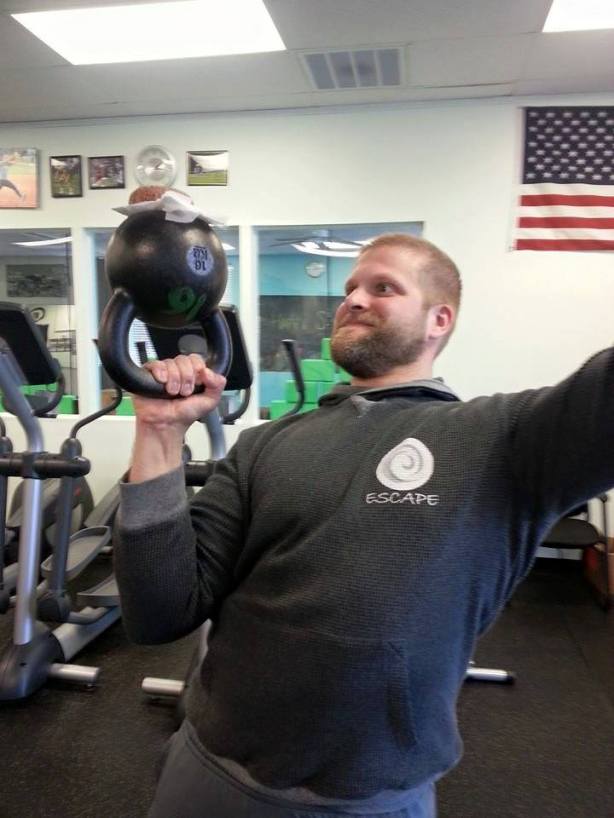I wrote a post a little while back about the usefulness of kettlebell training when used with good form and technique coupled with intelligent programming. (To read it click here.) In light of how well that post did, ( thank you) I decided to continue with the same premise and break down a bit more how kettlebell and its movements can and will train your core.
![7815702_f520[1]](https://boxer114.wordpress.com/wp-content/uploads/2017/05/7815702_f5201.jpg?w=614)
Before we begin the practical part of this post, I think it is important to realize exactly what the core is. One simple way to understand exactly what our core is as humans is the saying, “that if I cut off my arms, head and lower leg, there is my core.” So you see our middle as humans is more than just the abs and obliques. (To learn more about this subject, click here.)
Now that we have that out-of-the-way let’s get to the topic at hand: 6 Ways kettlebells can work your core.
The swing works the core:
It is a well-known and accepted fact that the kettlebell swing works the glutes and hamstrings. However, it does even more than that in its proper execution, those two other aspects as I stated earlier are part of your middle. Yet, the swing when done in the hard-style format will also train your abs. In order to make this happen one must brace the abs as if they were going to get punched on the top of the swing. This also serves as a veritable brake to stop the low back from hyper extending at the lockout of the swing.
![maxresdefault[1]](https://boxer114.wordpress.com/wp-content/uploads/2016/03/maxresdefault1.jpg?w=614)
The Overhead Press works the core:
The body has a highway of sorts on which we transfer energy from the floor into a movement. The overhead press is a perfect example of the concept, in which we wedge ourselves between the floor and the kettlebell that you desire to press. The glutes, abs, lats, diaphragm and so on are activated in order to achieve the overhead move in a way that is safe and strong.

The Kettlebell front squat trains the core:
The kettlebell racked squat is both an anti-rotational drill when done with one bell and a heck of an abs exercise when done with two. It once again hits the glutes as we hip extend, trains the pelvic floor, (more on that in the future) diaphragm when we use proper breathing patterns and so much more. This move is also a great one to teach a lifter good technique to begin to train the squat with barbells.
The Turkish Get-up works the core:
The Get-up is an awesome exercise. It teaches the practitioner to stabilize their shoulder and to move at the same time. It also works hip mobility, and shoulder mobility. But for the sake of this post it has been shown by E.M.G. to work all of the muscles of the core throughout the movement. It has built into a rolling pattern, spinal stability/shoulder stability and so-on. It is safe to say that the Get-up is an awesome exercise that saves time and trains multiple movements at the same time!
![hqdefault[1]](https://boxer114.wordpress.com/wp-content/uploads/2017/05/hqdefault1.jpg?w=614)
The Single leg deadlift works the core:
This move is both a stability and strength exercise. It is also anti-rotational exercise depending on where you place the bell in correlation to the move. This exercise when coupled with the right loading will lead to you having to use an abs brace to produce the force needed to lift the loading that you are using off the floor. Give it a shot and see!
Carries work your core:
Loaded carries can be like magic to those who never do them. These moves when used appropriately can bring balance to your muscles in patterns. Train shoulder stability, anti-rotation, build strength and just make you feel plain great! Click on the link above to learn more about them and to learn how to do most of the variations.

When most people think of the core they think abs and having a “six-pack.” I hope that after you read this post that there is much more than that to it than just a muscle and a look. Your core being balanced and things working well can lead to less pain in your low back and many other issues; it is also important for your performance as a fit person and or if you are an athlete.
So if you aren’t begin to train these moves and if you don’t know how, learn from a qualified, certified instructor in order to get all of the benefits that come training with kettlebells with good form and intelligent programming
![maxresdefault[1] maxresdefault[1]](https://i0.wp.com/boxer114.wordpress.com/wp-content/uploads/2016/03/maxresdefault12.jpg?w=303&h=170&ssl=1)
![maxresdefault[1] maxresdefault[1]](https://i0.wp.com/boxer114.wordpress.com/wp-content/uploads/2016/03/maxresdefault1.jpg?w=303&h=170&ssl=1)
![maxresdefault[1] maxresdefault[1]](https://i0.wp.com/boxer114.wordpress.com/wp-content/uploads/2016/02/maxresdefault1.jpg?w=610&h=343&ssl=1)
![maxresdefault[6]](https://boxer114.wordpress.com/wp-content/uploads/2012/12/maxresdefault6.jpg?w=614)

![cardio_benefits[1]](https://boxer114.wordpress.com/wp-content/uploads/2016/06/cardio_benefits1.jpg?w=614)
![maxresdefault[1]](https://boxer114.wordpress.com/wp-content/uploads/2014/08/maxresdefault1.jpg?w=614)
![bob-the-builder-umad_o_1449705[1]](https://boxer114.wordpress.com/wp-content/uploads/2016/05/bob-the-builder-umad_o_14497051.jpg?w=614)
![maxresdefault[1]](https://boxer114.wordpress.com/wp-content/uploads/2016/03/maxresdefault12.jpg?w=614)





![1150809_10201061486957655_1093619028_n[1]](https://boxer114.wordpress.com/wp-content/uploads/2014/08/1150809_10201061486957655_1093619028_n1.jpg?w=300&h=300)




